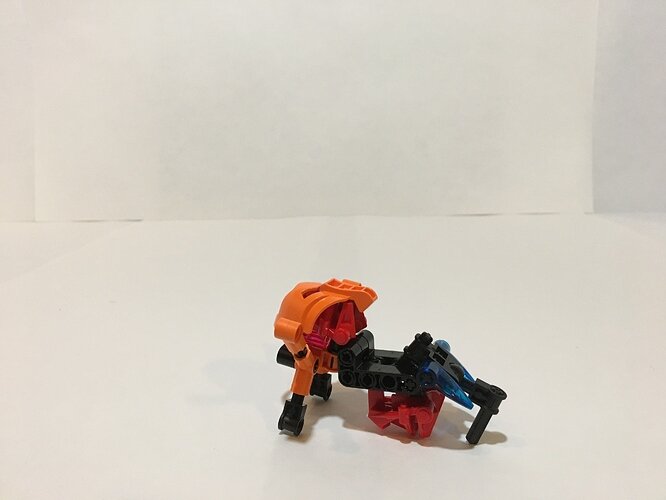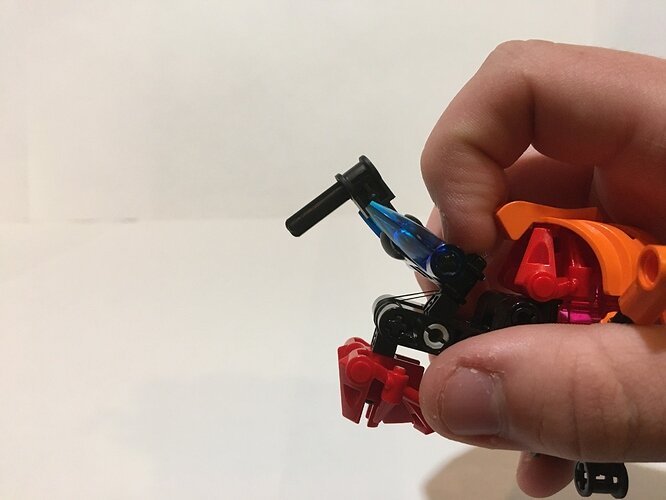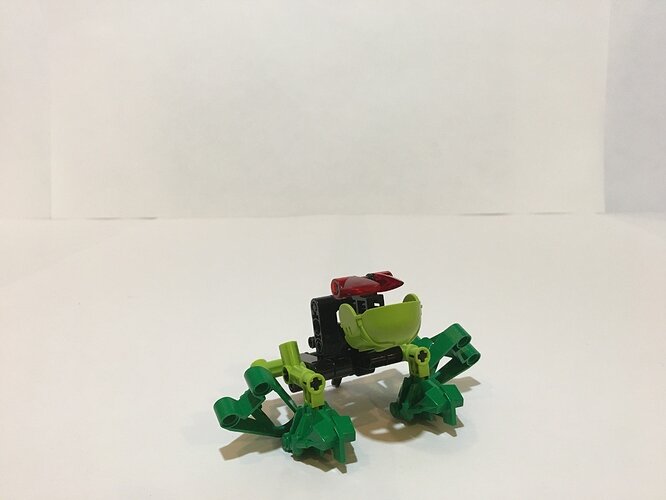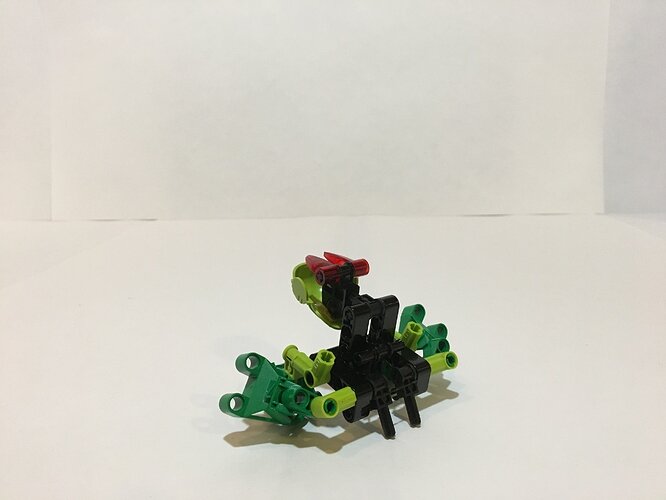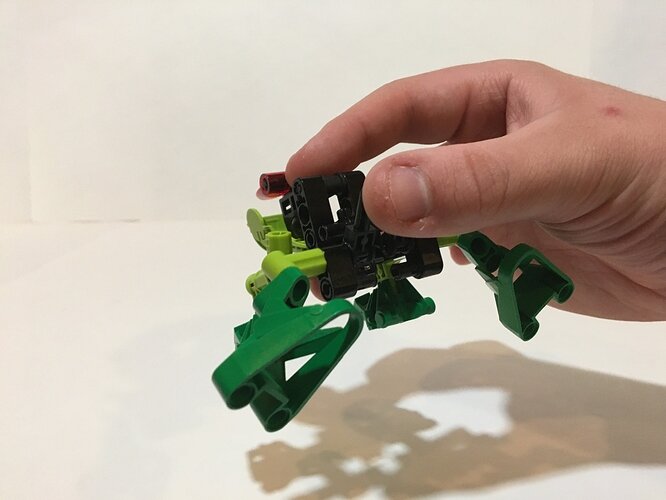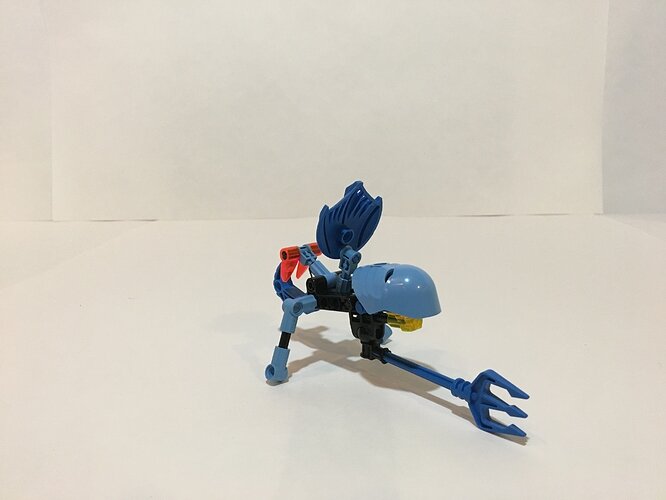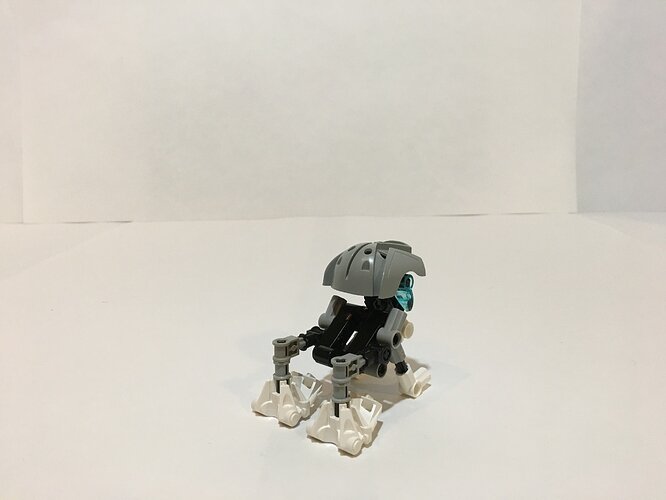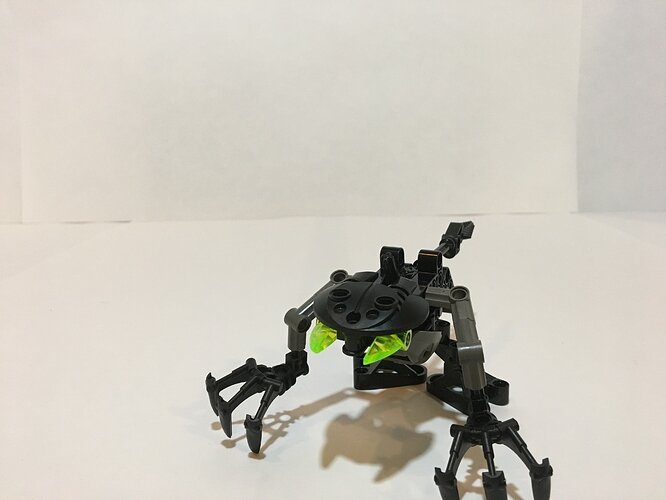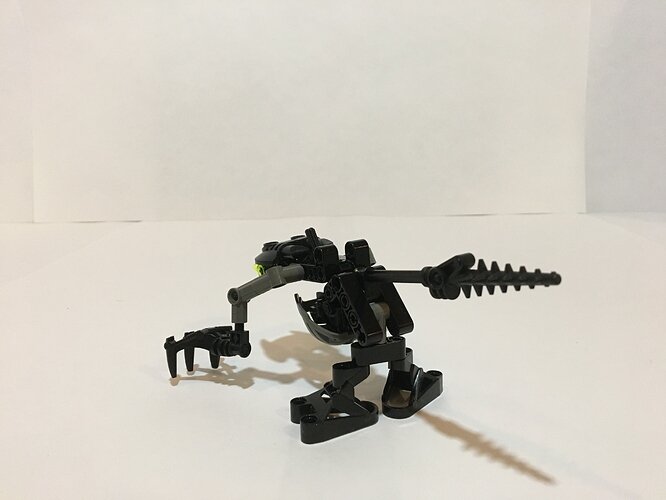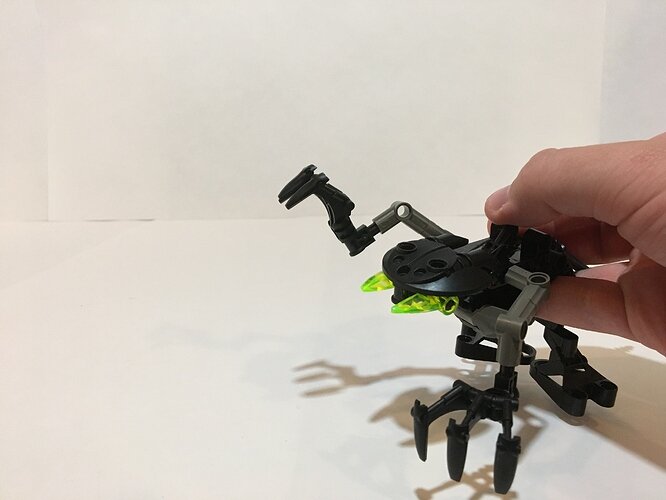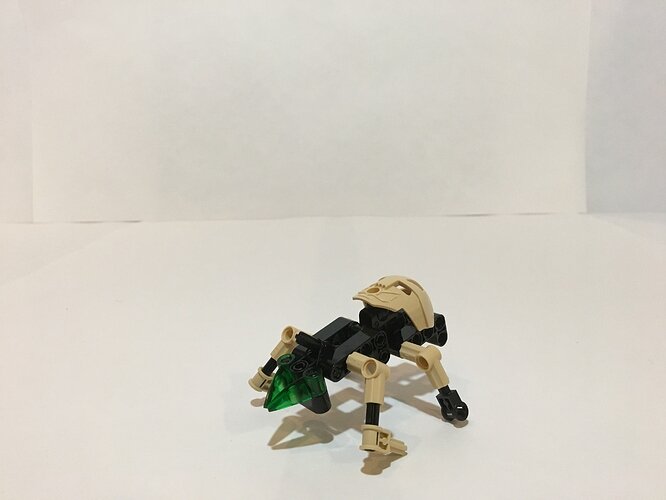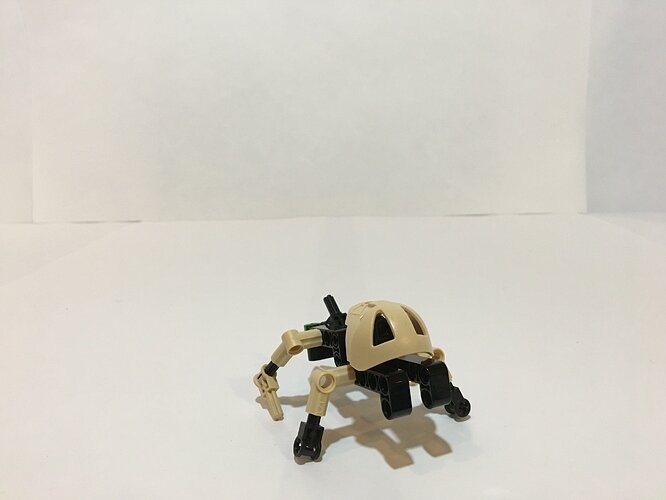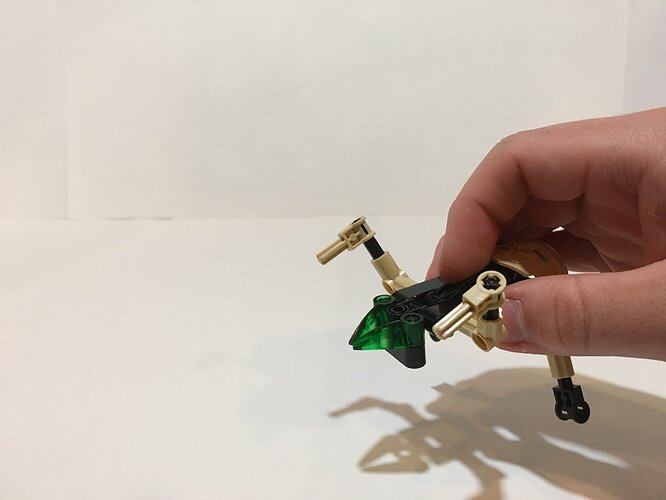These six Rahi are the results of my efforts to combine each Turaga with their respective Bohrok Va counterparts.
The combination of Vakama and Tahnok Va, the Fireflyer. Essentially, I saw an opportunity to give physical form to a canonical Rahi that only had descriptions to go on. This Fireflyer has a biting function, and bears the Kanohi on its abdomen, as described in Bionicle Chronicles 1: Tale of the Toa.
The combination of Matau and Lehvak Va, the Poroka. The Poroka is meant to be a tree frog, much smaller than the Ghekula and Makika. This Rahi has a jumping function, and lives in the vast jungles of Le-Wahi. It primarily feeds on small insect Rahi, and bears its Kanohi on its mouth.
The combination of Nokama and Gahlok Va, the Paruika. A fish like Rahi, capable of “walking” onto land for short periods of time. These Rahi typically dwell in muddy puddles, swamps, and shallow waters across the island of Mata Nui. Its large jaws are capable of crushing prey of similar size to itself, and it occasionally tries to eat any unfortunate Matoran that wander too close, though it cannot actually eat the Matoran. It bears its kanohi on its back, partially covered by its flap like dorsal fin.
The combination of Nuju and Korahk Va, the Wild Hapaka. These instances of the Hapaka are untamed by the Matoran, and are hyper-aggressive, highly territorial versions of the Hapaka. Its jaws are impressive, capable of crushing solid rock with ease. A pack of Wild Hapaka is often comparable to a school of land dwelling piranha. It bears its Kanohi on its head.
The combination of Whenua and Nuhvok Va, the Pangeru. These Rahi are nocturnal, and partially related to the much more fearsome Muaka. Make no mistake, the Pangeru have powerful, precise front claws, able to pierce through sheets of iron. Due to their smaller stature, these Rahi are able to stalk their prey far stealthier than a Muaka, and have near-perfect success at night thanks to their dark coloring. The Pangeru have excellent night vision, though it can be a hinderance in the daylight, so they often dwell in small burrows close to fields of tall grass. It bears its Kanohi on its stomach.
The combination of Onewa and Pahrak Va, the Keritara. The Keritara are beetle like Rahi with an exceptional prowess at digging. These Rahi can burrow themselves under dirt, gravel, and sand within seconds, though they cannot burrow through solid stone. The Keritara primarily dwell in the sands of Po-Wahi, though some can occasionally be found in the area of the Onu-Koro Highway that leads into Po-Wahi. It bears its Kanohi on its abdomen.
Instruction Video Link: https://youtu.be/t_6N0IzNEm0

